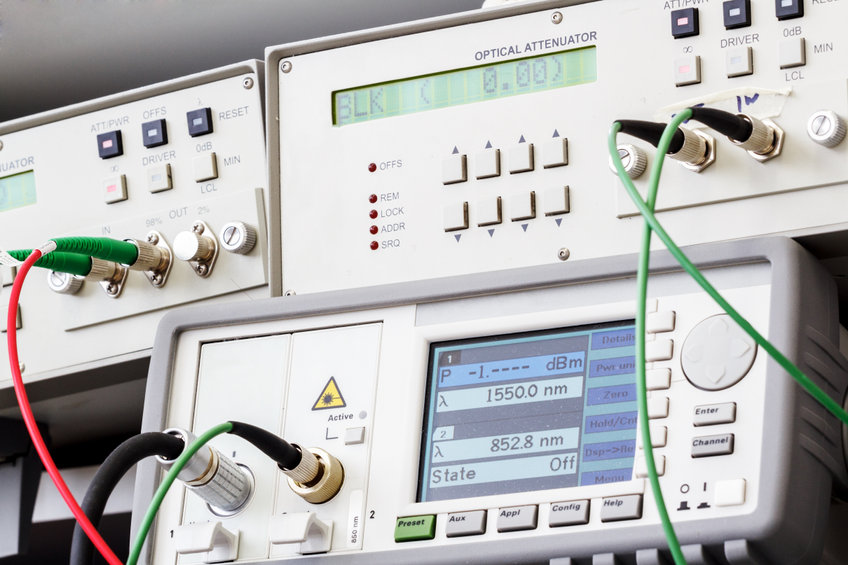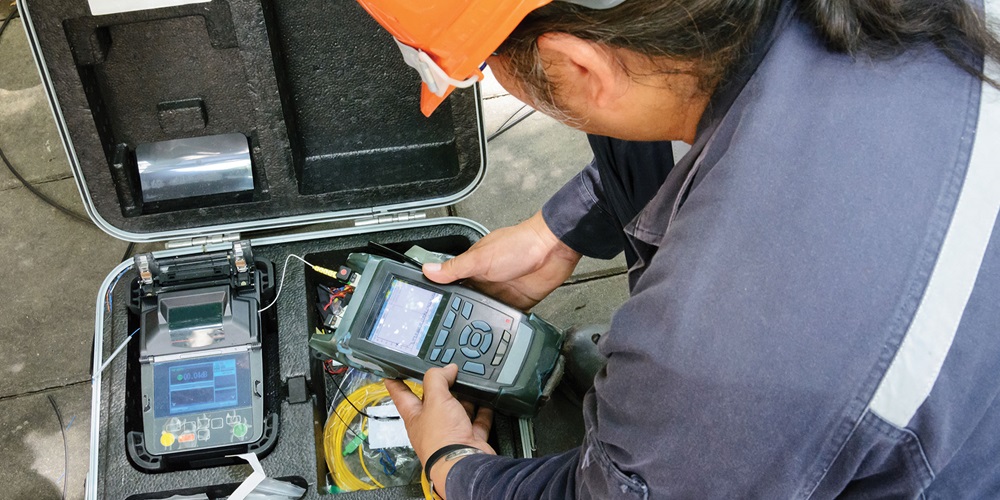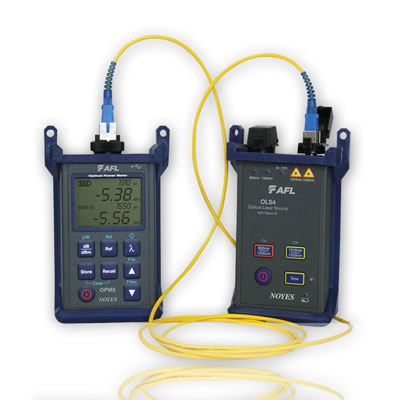A high-precision optical fibre diameter analyser is critical for fibre manufacturing.
Unveiling the Secret Uses of Optical Fibre Examining for Reliable Information Transmission
In the realm of contemporary interaction, optical fibre testing emerges as an important technique for maximizing data transmission. By employing techniques such as Optical Time Domain Reflectometry (OTDR) and insertion loss assessments, network drivers can successfully determine and attend to issues that might endanger signal stability. As the demand for faster and extra trusted links proceeds to rise, the ramifications of these testing methods extend beyond prompt fault discovery, affecting long-term network performance. Comprehending the complex applications of optical fibre screening welcomes a deeper expedition into its pivotal function in shaping the future of information communication.

Significance of Optical Fiber Testing
The significance of optical fibre testing can not be overemphasized, as it acts as a crucial component in guaranteeing the dependability and efficiency of information transmission systems. In a period where high-speed communication is paramount, any type of shortages in fibre optics can cause substantial data loss and reduced performance. Strenuous screening methods are necessary to confirm the honesty and efficiency of optical cables.
Evaluating permits the recognition of flaws such as micro-bends, macrobends, and splice losses that could prevent signal quality. It gives understandings into the general attenuation and bandwidth abilities of the fiber, ensuring that the network fulfills particular operational criteria. Normal testing not just boosts system efficiency however also extends the lifespan of the framework by determining prospective concerns prior to they escalate right into costly failures.

Sorts Of Optical Fiber Examinations
Different kinds of optical fiber examinations are conducted to make certain the performance and reliability of fibre optic networks. These tests can be classified right into numerous key kinds, each offering a specific function in analyzing the stability of the fiber.
First, Optical Time Domain Reflectometry (OTDR) is a famous examination that determines faults, mates, and ports within the fiber. By sending out pulses of light and assessing the mirrored signals, specialists can determine issues along the fibre's length.
Second, insertion loss examinations examine the amount of signal loss when light travel through ports or splices, which is important for preserving network efficiency.
Third, return loss examinations measure the quantity of light reflected back towards the source, giving understandings into the high quality of links and potential resources of disturbance.
Furthermore, connection examinations make certain that the fibre course is total, permitting specialists to validate that the fiber is undamaged with no more information breaks. ofda.
Lastly, visual fault locators utilize noticeable light to recognize breaks or serious bends like it in the fibre, assisting in fast troubleshooting. Jointly, these examinations create a comprehensive technique to keeping optimal performance in fibre optic networks.

Applications in Network Maintenance
In contemporary telecoms, effective network upkeep relies heavily on optical fiber screening to determine and remedy issues immediately. Routine screening makes sure that the network runs at ideal performance degrees, reducing downtime and boosting individual experience.
Among the key applications of optical fiber testing in upkeep is the discovery of mistakes, such as breaks, bends, or improper links. Methods like Optical Time Domain Reflectometry (OTDR) permit technicians to locate these problems accurately and assess the top quality of the fiber link. Furthermore, loss screening validates the stability of the optical path, making certain that signal attenuation remains within acceptable restrictions.
Regular maintenance testing also assists in safety nets, recognizing potential issues prior to they intensify right into substantial failings. This proactive approach can conserve companies both time and financial sources. Additionally, during upgrades or expansions, optical fibre testing makes sure that brand-new installments integrate perfectly with existing facilities.
Enhancing Data Transmission Reliability
Effective network maintenance with optical fibre screening not just addresses prompt issues however anonymous likewise plays a substantial function in improving information transmission reliability. By recognizing mistakes, determining signal loss, and evaluating the total condition of fibre optic cable televisions, testing makes certain that possible problems are rectified prior to they intensify right into substantial interruptions.
Routine optical fiber screening, such as time-domain reflectometry (TDR) and optical time-domain reflectometry (OTDR), permits service technicians to identify the specific places of breaks, bends, or connector concerns within the network. This proactive method not only minimizes downtime yet also optimizes the efficiency of information transmission by making sure that the pathways for signals are clear and operating efficiently.
Furthermore, testing aids in confirming adherence to industry standards and requirements, which is important for maintaining the honesty of data flow. By making sure that each link meets called for thresholds for loss and quality, companies can boost their self-confidence in the integrity of their data networks.
Inevitably, investing in comprehensive optical fibre screening not just enhances information transmission dependability however additionally supports the long-lasting functional performance of interaction infrastructures.
Future Patterns in Fiber Screening
Emerging technologies are poised to transform fiber testing, paving the way for enhanced performance and accuracy in data transmission diagnostics (robotic vision). As the need for faster internet and greater transmission capacity remains to rise, the combination of sophisticated tools such as artificial knowledge (AI) and maker discovering (ML) is readied to change traditional fiber testing methods. These technologies will make it possible for predictive upkeep and automated fault discovery, significantly decreasing downtime and improving network integrity
In addition, the adoption of Net of Things (IoT) tools will certainly help with real-time surveillance of fiber networks, enabling for instant identification of performance problems. This change in the direction of proactive monitoring will certainly decrease interruptions and maximize information circulation.
Additionally, technologies in optical time-domain reflectometry (OTDR) and new screening standards will certainly boost the precision of dimensions, guaranteeing that data honesty is preserved throughout the transmission process. The advent of 5G modern technology additionally requires the growth of a lot more sophisticated fiber screening techniques to sustain its high-speed requirements.
Final Thought
In final thought, optical fibre testing is essential for preserving reliable information transmission within interaction networks. By utilizing various screening techniques, such as OTDR and insertion loss tests, potential mistakes can be recognized and corrected, therefore enhancing signal quality and lessening downtime. Routine testing not just guarantees compliance with industry criteria but likewise promotes proactive maintenance, inevitably adding to the lasting integrity and efficiency of fiber optic systems. The ongoing evolution of screening methodologies will certainly better bolster these capacities in the future.